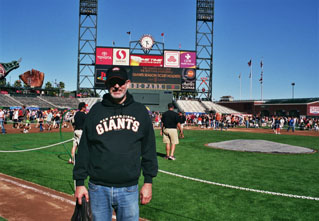Today I just want to point you to an blogpost with a lot of good intentions, entitled We Are What We Sing – you can read the whole post here. I do so in part as a follow up to my own latest Monday Morning Email entitled A Call for Better Music, which you can read here. I’m not sure why this got me in a bit of a rant mode, but perhaps you’ll be able to figure it out by reading on…
Here’s the main point of the aforementioned blogpost:
Music creates memory that is more lasting than words alone. Music helps us to see the same idea in new ways, to find new insights, to uncover new ways of being, to love again, to express emotion otherwise unknown. It takes us into another dimension where we can live more fully. The better the music, the greater its capacity to do its work. Although music has been a part of Christian worship as long as Christians have prayed and praised, we are only beginning to realize its importance. As a good friend has said, “We are what we sing.”
The author, Charlotte Kroeker, gives 5 ideals to which leaders can aspire in order to effect the “importance” of singing. Problem is, there is no real help in how to get there.
Here’s an example:
Congregations can purposefully master a broad and deep repertoire of hymnody and service music that will reside in the memory of the community. Granted, this effort will be different for every congregation and will change over time. Clergy and music leaders can help the congregation determine this repertoire, but ultimately it belongs to the congregation. Every congregation is situated in a particular cultural and ethnic context and has its own musical gifts. Experience shows that the life of a hymnal is about twenty years. Yet a succession of hymnals in any one denomination will share a surprising number of the same hymns, as will the hymnals across a variety of denominations, so these often serve as a starting place. Familiar music can form a basis for an ongoing repertoire and set a standard for other music to be added to the collection. After a basic repertoire is mastered, confidence will allow the exploration of a wealth of new music to enhance and enrich worship.
OK…mom & apple pie time. Sure, absolutely. But how?
Here’s the rest of the things. I’ll spare you the prose, but I’m interested in how you would do any of these things in/with your congregation.
- Leaders can teach the congregation the art of singing
- Stewards of church facilities can provide the acoustic environment for singing
Here’s a clue on this one: hard to do an acoustical re-fit. What you’ve got is what you’ve got.
- Musicians can accompany with sensitivity
- Leaders can seek out capable musicians in the congregation to enrich the song
There you have it. In my opinion, this calls for expert advice. So what would you do? Please leave a comment and let me know.
Ipod shuffle status: 3365 (Up the Ladder to the Roof – The Nylons) of 7875
…
Get my EBook The Choir in Modern Worship











{ 2 comments… read them below or add one }
We have several congregations in the US using discoverlearnandplay with their ministries/musicians. It’s a nice way of giving them access to a solid music curriculum in a self-paced program with the support of a world class faculty. It challenges those players who can handle it and allows the novices to ‘catch up’. Directors tell us it saves valuable rehearsal time as well. http://goo.gl/qinRq
Thanks for the info.
You must log in to post a comment.